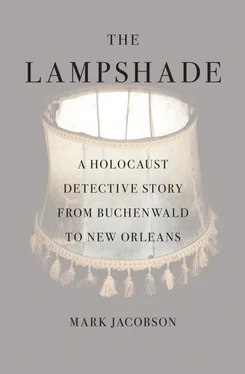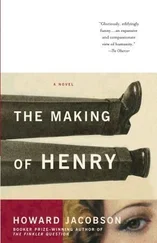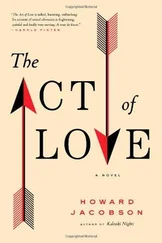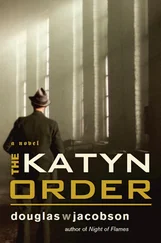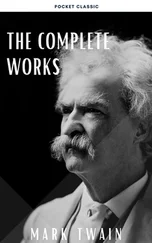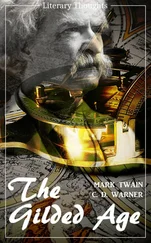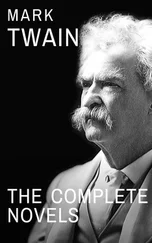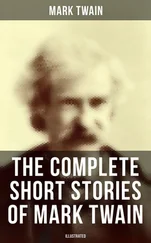It would be fascinating to hear the general’s views, because when it came to the issue of race, he’d seen the Beast in action, right there at Lee Circle.
• • •
New Orleans has had its share of race riots. [19] New Orleans’s ethnic riots did not all involve members of the black community. The anti-Italian riots of 1891, during which eleven immigrants were murdered, rank as the largest mass lynching in American history. The incident was set off by the assassination of New Orleans police chief David Hennessy, who had arrested a number of reputed Mafia racketeers. Hennessy’s reported dying words, allegedly whispered to an NOPD captain, “Dagoes did it,” set off a chain of events that culminated in a mob storming the Orleans Parish Prison and dragging out all Italian prisoners. The lynchings were defended by New Orleans mayor Joseph Shakespeare, who said, “The Italians had taken the law into their own hands and we had no choice but to do the same.”
In 1866 a group of former Confederates attacked a meeting of Radical Republicans who were protesting the state legislature’s refusal to allow freed blacks to vote. Thirty-eight people were killed. In 1874, at the so-called Battle of Liberty Place, thirty-five hundred armed members of the “White League” seeking to overthrow the “carpetbagger” government and the rule of “the insolent and barbarous African” faced off against a like number of mostly black local militia troops under the command of “turncoat” ex—Confederate general James Longstreet. The White Leaguers overran the poorly equipped blacks, driving the forever disgraced Longstreet into the river. Dozens more were killed.
Race relations in New Orleans and the country at large entered a new stage in 1892 when Homer Plessy, a twenty-nine-year-old light-skinned Creole man from the Treme district challenged the recently passed Louisiana “separate car” law by boarding the “whites only” section of an East Louisiana Railroad train at the Press and Royal Street station in the Bywater. Plessy challenged his arrest, leading to the 1896 “separate but equal” Supreme Court ruling that legalized the Jim Crow codes throughout the South. [20] On February 11, 2009, 117 years after Homer Plessy’s arrest at the corner of Press and Royal Street, 113 years after the watershed Plessy v. Ferguson Supreme Court case, the City of New Orleans finally got around to putting up a plaque on the site. A heartwarming story it was, too, at least as depicted in the Times-Picayune, which told of how Keith Plessy, a fifty-two-year-old New Orleans bellhop and great-grandson of Homer Plessy’s first cousin, collaborated with Phoebe Ferguson, great-great-granddaughter of John Howard Ferguson, the judge who ruled to uphold the city’s “separate car” laws, to make sure the city finally commemorated the historic spot. Some people, Skip Henderson among them, were less than impressed. Skip had been trying to get the vacant lot where the railway station once stood turned into a “Civil Rights Park” for years with no success. “Looks kind of like a historical marker you drive by on the interstate,” Skip said of the two-foot-square brown and yellow plaque. But still, it was better than nothing.
Racial discrimination had also acquired a new vocabulary, as evidenced by a story in the New Orleans Times-Democrat of July 17, 1900, in which Dr. Gustav Keitz, a German-born Canal Street physician with a passion for eugenics, wrote that the number of Negroes could be reduced through “asexualization, a measure which should be practiced at the earliest possible period of life.” Less than a month later, this relatively modest proposal was eclipsed by an editorial written by Henry J. Hearsey, a former Confederate major and editor/publisher of the New Orleans Daily States , the official journal of city government and leading afternoon paper in Louisiana. More than forty years before the Nazis used the phrase at the Wannsee Conference, Hearsey wrote of “The Negro Problem and Its Final Solution,” declaring that if blacks should continue to “by word or deed listen to the screeds of agitators in the North,” the South would have no choice but to engage in a full-scale race war. Hearsey regretted that “whites would suffer some casualties in the conflict,” but there would be a major consolation: “The Negro Problem in Louisiana at least will be solved—and that by extermination.”
Hearsey’s editorial was responding to the just concluded “Robert Charles Riots.” The incident had begun on the evening of July 23, 1900, as Robert Charles, a thirty-five-year-old black railway worker, sat on the stoop of a house in the 2800 block of Dryades Street, then in the middle of New Orleans’s Jewish neighborhood. Approached by a trio of New Orleans police officers, Charles was told to run along. Son of illiterate Mississippi sharecroppers and a self-educated follower of the fledgling International Migration Society, one of the first groups to advocate that former slaves repatriate themselves to Africa, Charles declined, telling the cops he was waiting for his girlfriend, Virginia Banks, and her roommate Ernestine Goldstein. The fact that Charles was something of a dandy, decked out in clothing purchased from Hyman Levy’s clothing store on Poydras Street (Levy would later describe Charles, with whom he had a friendly relationship, as “a stylish negro, above the average darkey in intelligence”), probably didn’t help matters. At some point in the conversation, one of the cops knocked Charles’s snazzy brimmed hat from his head. Told to leave the hat on the ground, Charles refused, and committed what the police report described as “an aggressive act.” A struggle ensued, the police discharging their weapons in Charles’s direction. In possession of a small handgun, Charles returned fire, wounding one of the policemen. Shot in the leg, Charles was cornered several hours later in a house on Fourth Street, a few blocks away. This time Charles shot a police captain through the heart and, shouting “I will give you all some!”, sent another bullet through a second policeman’s head and fled.
Thus commenced the largest manhunt in New Orleans history. The fully mobilized 315-man NOPD was quickly joined by a rapidly swelling army of vigilantes. The black journalist Ida B. Wells-Barnett described the development in a pamphlet entitled Mob Rule in New Orleans: Robert Charles and His Fight to Death, The Story of His Life, Burning Human Beings Alive, Other Lynching Statistics. “Wednesday New Orleans was in the hands of the mob… ,” Wells-Barnett writes. “Unable to vent its vindictiveness and bloodthirsty vengeance upon Charles, the mob turned its attention to other colored men who happened to get in the path of its fury… The reign of absolute lawlessness began about 8 o’clock Wednesday night. The mob gathered at the Lee statue…”
Wells quotes at length from the account that was published in the New Orleans Times-Democrat the next morning. The Lee Circle gathering of about seven hundred was addressed by a man introducing himself as the mayor of nearby Kenner, who said, “‘I have killed a Negro before and in revenge of the wrong wrought upon you and yours, I am willing to kill again. The only way that you can teach these Niggers a lesson and put them in their place is to go out and lynch a few of them… String up a few of them, and the others will trouble you no more.’”
Two days later, his hideout at 1208 South Saratoga Street revealed by a paid police informer, Charles was besieged by a crowd wildly estimated at anywhere between one and twenty thousand. Fighting alone, using homemade bullets made from a lead pipe melted down over a charcoal stove, Charles held off the mob, the NOPD, and the Gatling gun—wielding state militia for several hours, shooting twenty-one of his attackers. He was routed only when the house was set on fire, whereupon he was shot, burned, and beaten beyond recognition, then dumped into a potter’s field grave.
Читать дальше
